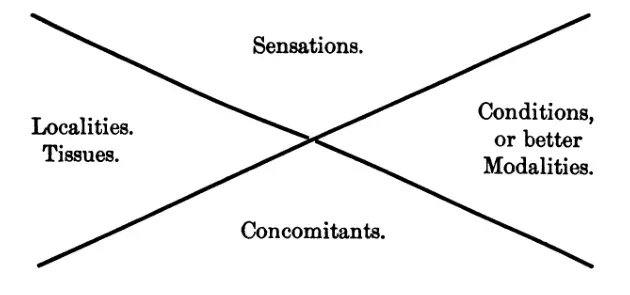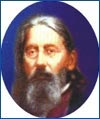PREFACE TO VOL. I
THIS work will especially commend itself to the busy practitioner, because it is an attempt to give our Materia Medica in such a form as will make the selection of a curative medicine in any given case as easy as possible. It is a complement to all other works on our Materia Medica, being principally a collection of CURED SYMPTOMS. We could fill pages with quotations from our best practitioners in favour of their use in the selection of remedies. A cured symptom only, has never such an intrinsic value as one produced and cured, and yet, such a one should not be ignored; in course of time it may be added to the characteristics. Of course all characteristics will be found here, and many other symptoms produced and cured, which further experience may warrant us in marking up in degree until they attain the grade we denominate characteristics.
As so many peculiar views have been expressed in regard to what is meant by a characteristic, a few words on the subject may not be out of place. Some of our best observers have been sneered at by would-be critics, as if they had been guilty of manufacturing characteristics. This, of course, proves them to be sadly deficient in a knowledge of the Organon. Let us see what Hahnemann says there, in his masterly advice how to examine the sick.
§ 95. In chronic diseases the investigation of all symptoms should be conducted as carefully and circumstantially as possible, and made to penetrate the minutest details, because they are most peculiar and most unlike those of acute affections, and also because they never can be too accurately considered for the purpose of successful treatment. Again, chronic patients are so injured to suffering, that circumstances, however characteristic and decisive in the selection of the remedy, are rarely, if at all, mentioned by them, but rather considered as a part of their unavoidable condition. It rarely occurs to them that other small or great deviations from the healthy condition might be connected with the main disease.
§ 101. A physician accustomed to exact observation may approach the true condition of an epidemic so closely that he is enabled to construe a characteristic image of the same, and even to discover the appropriate homeopathic remedy.
§ 102. By writing down the symptoms of several cases of this kind, the sketch of the disease will gradually become more complete; without being enlarged by additional phrases, it will be more closely defined (more characteristic) and made to embrace more of the peculiarity of such collective diseases. General signs such as want of appetite, sleeplessness, etc., are specified and defined. More prominent and special symptoms will be made conspicuous by proper notation, and constitute the characteristics of the epidemic.
§ 104. When all the prominent and characteristic symptoms, collectively forming an image of a disease, have been carefully committed to writing, the most difficult part of the work will have been done.
§ 153. The search for a remedy consists in the comparison of the totality of the symptoms (of the sick) with the symptoms of our proved drugs. In making this comparison, the more prominent, uncommon and peculiar (characteristic) features of the case are especially and almost exclusively considered and noted; for these in particular should bear the closest similitude to the symptoms of the desired medicine, if that is to accomplish the cure. More general and indefinite symptoms, such as want of appetite, headache, weakness, restless sleep, distress, etc., unless more clearly defined, deserve but little notice on account of their vagueness.
In paragraphs 164, 165 and 178 nearly the same is repeated.
For the benefit of all who may have an opportunity of comparing the master’s first edition of 1810, we quote the paragraphs and pages where he used the word “characteristic.” § 74, p. 73, more fully explained; § 129. P. 108; § 135, p. 114; § 152, p. 122; § 169, p. 132; § 183, p. 151.
Every word contained in his masterly advice how to examine the sick was new and unheard of in the history of medical science.
According to this practical advice of Hahnemann, we have endeavoured to find out the characteristics of our drugs.
What are the ways our School has followed? The first is, we allow the possibility that symptoms may follow when a drug is taken in health, and that these symptoms are produced conjointly by the drug and the prover.
“Could Cinchona bark produce altered sensations on myself, if I took it now in health?” This was the question which induced Hahnemann to make his first proving, in 1790. The answer was, he felt a group of symptoms exactly such as he had when he suffered from intermittent fever, twenty years before, in Siebenbürgen. Was he satisfied with this observation? Certainly not. He repeated his experiment, and he repeated it several times with exactly the same result. “I stopped taking it, and got well,” he says.
Throughout all, we see the fine result of the thinking lessons given to Hahnemann by his father when a boy.
His very first step already refuted the slander which was subsequently flung at our school, that it was based on the conclusion, post hoc, ergo propter hoc. If the same or similar symptoms appeared in the proving of a drug on the healthy, they were considered as having been probably caused by it, and the oftener the symptoms appeared in the provings, the greater became the probability. How anxiously the first builders of our Materia Medica looked for the printing of the provings, in order to compare their own with the symptoms of others, deriving enjoyment from each confirmation! The next step was to look for physiological and pathological corroborations. But all this was only considered as magnifying the probability.
The next step was to give a drug to the sick, according to the symptoms it had produced on the healthy and the cures made were the verifications.
Finally we obtained the CHARACTERISTIC, the ripe fruit hanging upon the tree.
We never selected the remedy according to the loose generalizations in fashion with many, and considered more scientific. We never walked on pathological stilts, but always took the symptom as a reality, on the one side observed by the prover, and on the other side observed on the sick.
Phrases of “grand starting-points” and “centers of action in the ganglionic nerve-centers” are vagaries of a scientific appearance which every tyro can manufacture anew according to the latest fashion.
The definition of a characteristic being “a symptom not found under more than one remedy” is quite erroneous. Such a unicum occurring among a large collection of symptoms should be looked upon with suspicion. On the contrary, all our most approved characteristics, as they have been corroborated time and time again, are never such as are found in one medicine alone.
Many years ago, for the benefit of the students at Allentown, the following little scheme was written on the blackboard in the lectures on Materia Medica.

The characteristic may be found in one or more of these. Three points of rest, according to mathematics, being enough to support any object, we may assume that three characteristics should be sufficient to make a cure very probable.
All the so-called dynamics have been omitted. Thus the various applications of heat and cold, the water treatment, the two electricites, light and the use of colors, especially the indispensable blue light, magnetism (the work of many years of our master), the contact of metals (lately taken up again by the Old School), the highly valuable mesmerism, and the movement cure; not as if one could be a physician without them, but because they ought to be treated of in a separate work. So also all medicinal springs have been left out for the same reason. Some of the drugs have not found a place in this work for want of trustworthy cures.
Very little notice has been taken of the so-called “critics,” remembering the “razzia” of Roth in Paris, who had no other intention but to destroy our Materia Medica, and that by striking out, for the most trivial reasons, symptoms by the thousand. Like a don Quixote, he was fighting with windmills, and was not without a Sancho Panza, who wrote a treatise to show that Hahnemann’s quotations of Dulcamara were erroneous, and that we had no right to give it for symptoms following exposure to cold. The poor critic did not know that there was scarcely a practitioner of homeopathy who had not made such cures by the score.
CONSTANTINE HERING.
PREFACE TO VOL. III
WE herewith present to the medical profession Vol. III of The Guiding Symptoms, the completion of which we have found a labor of love.
Actuated, as we have been, by the spirit of the departed author, it has been our aim to complete the volume just as it would have been had Hering lived. At the time of his death, the first forms, containing Bryonia, had left the press; Bufones, Cactus, etc., had been prepared by him for the printer, and a day before his sudden death he was collating the materials of Calcarea ostrearum. Here his work of over fifty years was turned into hands he had trained and trusted, for the purpose of completing what he felt he would never see finished in this life, and yet hoped to in the next; for in his homely and quaint way he said, a few weeks before his departure, “Perhaps, from my place in Heaven, I may peep through a little hole and see that my work is well done!”


Comments are closed.